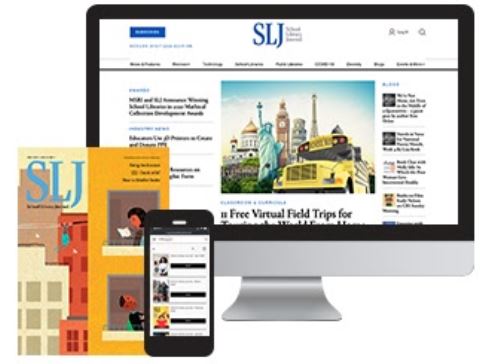Evaluating a Collection for Bias and Stereotypes with Primary Students: A Case Study, Tools, and Tips
A classroom teacher and a librarian engaged early elementary student in discussions about identity and stereotypes—and asked them to evaluate a book collection.
Getting started
In the fall of 2017, I attended a professional development course led by the district social studies coach in the Cambridge (MA) Public Schools titled “Culturally Responsive Instruction in the Elementary Social Studies Classroom.” During one of the sessions, participants discussed teaching for social justice. We were directed to the Using Their Words website for information on the six elements of teaching about social justice, and examples of projects that others have conducted with their classes.
I was curious about how to engage in these deep conversations with primary students in the Cambridgeport School, so I took a look and discovered a project in which a first grade class explored the question: “Does our library represent a diverse group of people?” I was intrigued. I had just received word from our principal that we had additional funds, specifically allocated to make our classroom libraries more inclusive. I wanted to try to recreate this project with my second graders. I reached out to my school librarian, Liz, for help. With support from and classroom coverage arranged by school administrators, we were able to meet. We discussed our goals and desired student outcomes, along with how this project would be implemented in the classroom and library. We talked about laying the groundwork, developing guiding questions, and selecting texts. Here are some guidelines we came up with and outcomes we observed, and a few suggestions for others who would like to implement similar studies in their schools.
Suggested Text SetBig Red Lollipop by Rukhsana Khan Deep in the Sahara by Kelly Cunnane Malala, a Brave Girl from Pakistan / Iqbal a Brave Boy from Pakistan by Jeanette Winter Amal's Eid by Amy Maranville Nelson Mandela, by Kadir Nelson Not All Princesses Dress in Pink by Jane Yolen and Heidi Stemple My Three Best Friends, and Me, Zulay by Cari Best Last Stop on Market Street by Matt de la Peña Emmanuel's Dream by Laurie Ann Thompson My First Ramadan by Karan Katz One Plastic Bag: Isatou Ceesay and the Recycling Women of The Gambia by Miranda Paul ¡ Sí Se Puede!/Yes We Can!: Janitor Strike in L.A. by Diana Cohn The Day Gogo Went to Vote by Elinor Batezat Sisulu I'm New Here by Anne Sibley O'Brien My Name Is Yoon by Helen Recorvitz Dear Primo by Duncan Tonatiuh EllRay Jakes, the Recess King! by Sally Warner Buzz Beaker and the Growing Goo by Cari Meister |
Guiding questions
● Who is represented in our books?
● Who is not represented in our books?
● What can we do to make our class library more representative and inclusive?
Our goals and hopes for student outcomes
We wanted students to be able to:
● Understand what a stereotype is
● Recognize stereotypes of race, ability, and gender in children’s books
● Question why certain people are and are not represented in children’s books
● Make decisions about why representation matters in print media
Implementation
In the library, we:
● Began by talking about identity so that students would understand that people are multifaceted, and that no one trait dictates exactly who someone is.
● Worked to build background knowledge about how groups of people are treated. We discussed how some people were discriminated against for one aspect of their identity—or perceived identity.
● Defined stereotype with an introduction through books. With the class, we read books and then pointed out and discussed the stereotypes we noticed. We also noted who was left out of the story—and possibly why they were left out.
● Built on what the classroom learned about representation in children's books looking at publishing statistics. We left the illustration of the 2015 publishing statistics in view, and introduced Rudine Sims Bishop’s mirrors and windows metaphor, asking children why window and mirror books were important.
● We set up a Skype meeting with an executive from one of the large publishing houses. Like all large publishers, this one has struggled with representation and inclusivity in children’s books. But unlike some, this one is actively working toward remedying the issue. We wanted our students to be empowered to communicate what they recognized as “wrong” (lack of inclusivity and diversity in characters, themes, and narratives) and provide a solution. It was also important for kids to understand that as consumers, they have the right to question and be critical of what is being sold to them.
In the classroom, we:
● Began working with students after they had some experience with the word "stereotype" in library class. We revisited the illustration of the 2015 publishing statistics of children’s books and shared what we noticed and what we wondered about.
● Turned the information from the illustration of publishing statistics into a bar graph (to align with Common Core State Standards for second grade math!), and juxtaposed it with a bar graph representation of the racial demographics of students in our class.
● Stated the goal of the project: using the $200 that the principal had provided us, we were purchasing books for our classroom library to ensure that a broader range of people are represented in the books we read.
● Conducted read-aloud sessions (of titles from the text set provided by Liz), exploring books with characters who have disabilities, characters of color, and characters who challenged traditional gender stereotypes.
● Asked students to take inventory of our classroom library to determine the frequency with which we found books that fit into the categories above.
● Purchased 13 books for our class that featured characters who challenged gender norms, had disabilities, or were people of color.
Actual student outcomes
We discovered children independently choosing to write about issues of representation and stereotypes in their readers’ notebooks, as well as engaging in conversations about identity, representation, and stereotypes with people in the school. We learned they were engaging in those conversations at home. Students also made deliberate choices to read books that challenged stereotypes of gender and ability, or which featured characters of color. We noticed children who appeared more comfortable sharing their own stories (talking and writing about their religious or cultural practices) and hearing about their classmates’ lives. Outside of school, the practice of detecting stereotypes (in independent reading)—and challenging them—continued.
The study naturally bled into other curricular areas (particularly ELA) as the year progressed. Children wrote fairy tales that challenged stereotypes, and even chose to write and publish a class book about facts they learned about the continent of Africa. A group of boys wrote a fairy tale in which they were adamant about having a girl be the “bad” character because “boys aren’t always bad.”
Considerations for implementation
Our advice to others wanting to initiate a similar project would be to start early in the year and be thoughtful about aligning the project to standards across the curriculum in order to allow time to explore the idea in depth, and to make space for this work. Consider anonymously keeping track of library circulations to see if kids’ reading habits changed as the project progresses. And, finally, let children choose the books to purchase for the classroom library, perhaps by asking them to write opinion piece recommendations.
As adults, we know that representation matters. We see startling examples every day that confirm why it is important for people to see themselves and others represented in media. This can seem like a very complicated conversation to have with young children. However, after engaging in this project, it has become clear to us that students as young as first and second grades can lean into this work. It’s essential that we give them opportunities to do so.
 Maisha Sport (r) began her teaching career at the Knight Children’s Center, of the Home for Little Wanderers. She joined the Massachusetts public school system in 2012 as a kindergarten teacher and in 2016 began teaching first and second grades.
Maisha Sport (r) began her teaching career at the Knight Children’s Center, of the Home for Little Wanderers. She joined the Massachusetts public school system in 2012 as a kindergarten teacher and in 2016 began teaching first and second grades.
Liz Phipps Soeiro (l) is an elementary school librarian in Massachusetts. She a member of the advisory board for Libraries Without Borders (Bibliothécaires Sans Frontières). Liz was named a 2017 Library Journal Mover & Shaker and the 2017 School Library Journal School Librarian of the Year: Hero of Family Outreach. Most recently, she has been awarded the Conant Fellowship at Harvard School of Education for the 2018–19 academic year.
RELATED
The job outlook in 2030: Librarians will be in demand
The job outlook in 2030: Librarians will be in demand
ALREADY A SUBSCRIBER? LOG IN
We are currently offering this content for free. Sign up now to activate your personal profile, where you can save articles for future viewing







Add Comment :-
Comment Policy:
Comment should not be empty !!!